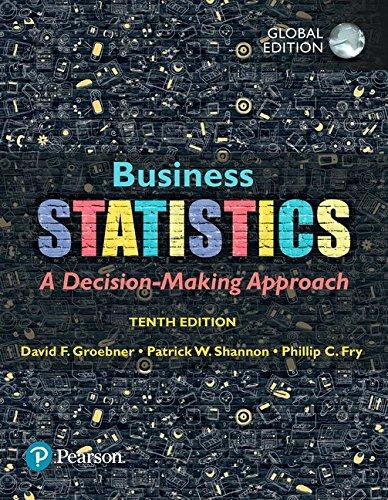It has been reported that revenues at Disneyland and Disney World have been increasing faster than attendance,
Question:
It has been reported that revenues at Disneyland and Disney World have been increasing faster than attendance, which means it costs more to spend time in the Magic Kingdom (source: Jason Garcia, “Disney parks visitor spending is growing faster than attendance,”
Orlando Sentinel, https://skift.com, Mar. 16, 2014).
Suppose executives at the Walt Disney Company are interested in estimating the mean spending per capita for people who visit Disney World in Orlando, Florida. Since they do not know the population standard deviation, they plan to use the t-distribution (see Chapter 9) to conduct the test. However, they realize that the t-distribution requires that the population be normally distributed.
Assume that 600 customers were randomly surveyed, and the amount they spent during their stay at Disney World was recorded. These data are in the file called Disney. Before using these sample data to estimate the population mean, the Disney executives wish to test to determine whether the population is normally distributed.
a. State the appropriate null and alternative hypotheses.
b. Organize the data into six classes and form the grouped data frequency distribution (refer to Chapter 2).
c. Using the sample mean and sample standard deviation, calculate the expected frequencies, assuming that the null hypothesis is true.
d. Conduct the test statistic and compare it to the appropriate critical value for a significance level equal to 0.05. What conclusion should the executives reach? Discuss.
Step by Step Answer:

Business Statistics
ISBN: 9781292220383
10th Global Edition
Authors: David Groebner, Patrick Shannon, Phillip Fry






